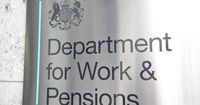The UK's State Pension age will begin incrementally rising from 66 to 67 starting next year, with the increase due to be fully in place for all men and women nationwide by 2028. This adjustment to the official retirement age has been in the pipeline since 2014, with another increase from 67 to 68 planned to take place between 2044 and 2046.
The Pensions Act 2014 expedited the rise in the State Pension age from 66 to 67. The UK Government also modified how the age increase is phased in, meaning that, instead of reaching pension age on a specific date, people born between March 6, 1961, and April 5, 1977, will become eligible to claim the State Pension from their birthday. It's crucial to be aware of these impending changes, especially if you have a retirement plan. All those affected by alterations to their State Pension age will receive a letter from the Department for Work and Pensions (DWP) well ahead of time.
As per the Pensions Act 2007, the State Pension age for both genders will rise from 67 to 68 between 2044 and 2046. The Pensions Act 2014 mandates a regular review of the State Pension age at least every five years. This review will be centred around the principle that individuals should spend a certain portion of their adult life receiving a State Pension. The state pension age in the UK, currently on track to increase to 68, is set for a review before this decade concludes. The previous Conservative government had scheduled this review for two years after the General Election, meaning it is due to take place in 2026.
The review will take into account life expectancy and other pertinent factors when determining the State Pension age. Following the review, changes to the age may be proposed by the UK Government. However, any suggested alterations must receive Parliamentary approval before they can be enacted into law. This represents the earliest age you can begin receiving your State Pension - which might not coincide with the age at which you can access a workplace or personal pension.
The GOV.UK website provides an online tool that allows anyone, regardless of age, to check their State Pension age - a crucial step in planning for retirement. You can utilise the State Pension age tool to verify:
- When you will reach State Pension age
- Your Pension Credit qualifying age
- When you will be eligible for free bus travel
Regarding enhancing State Pension payments, HM Revenue and Customs (HMRC) recently announced more than 10,000 payments worth a total of £12.5 million have been made via the new digital service since it was brought in last year. Those aiming to optimise their retirement income through the contributory benefit are able to address any gaps in their National Insurance (NI) records for the six years prior. For some, accruing National Insurance credits may be preferable over making pension contributions.
Further information on voluntary contributions is available on GOV.UK. Working-age individuals can also check their State Pension forecasts on GOV.UK. Alice Haine, personal finance analyst at Bestinvest by Evelyn Partners, offered insight into the significance of National Insurance for securing pension entitlements. She said: "People typically need at least 10 qualifying years of NI (national insurance) contributions to receive any state pension at all, and at least 35 years to receive the full new State Pension - though they don't need to be consecutive years."
"Plugging gaps can be quite an expensive process, so it is important to assess whether you actually need to buy back any missing years. This will depend on how many more years you plan to work, and whether you are eligible for NI tax credits, which fill the gaps, such as those who have been sick, were unemployed or took time out to raise a family or care for elderly relations. Plugging gaps in your record is relatively straightforward since the government rolled out its new NI payments services in April last year - a State Pension forecast tool that has been checked by 3.7 million since its launch."
She added: "People simply need to log into their personal tax account or the HMRC app to not only view any payment gaps but also check if they can plug those gaps directly through the Government's digital channels. A short survey assesses the person's suitability to pay online with those eligible to pay directly given a series of options to plug any gaps depending on when someone wants to stop working. Calculating whether to top up can be confusing though and ultimately there is no point paying for more years than you need because you won't get that money back."
Ms. Haine further stated: "People who might need to top up include those that took a career break as well as low earners or expatriates living and working abroad." The deadline for making voluntary contributions is fast approaching, with individuals urged to act swiftly to ensure they maximize their State Pension entitlements.
In summary, the changes to the State Pension age and the importance of National Insurance contributions highlight the need for individuals to stay informed and proactive about their retirement planning. With the upcoming rise in the State Pension age and the need to address any gaps in National Insurance records, it’s essential for those affected to take the necessary steps to secure their financial futures.





